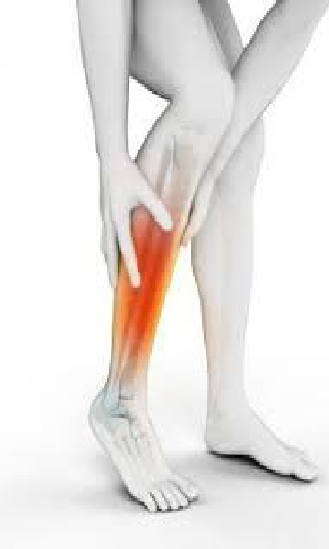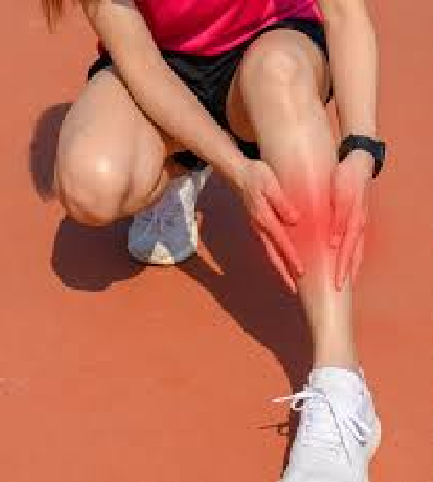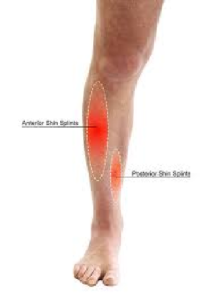Understanding Shin Splints: Causes, Symptoms, Prevention, and Treatment
Shin splints are a common discomfort in the lower leg. This pain and inflammation typically occur along the shinbone (tibia) due to repetitive stress on leg muscles, tendons, and bone tissues.
Understanding shin splints is essential for making informed decisions about your health and activities. Whether you’re an athlete striving for peak performance or someone dealing with persistent leg pain, understanding shin splints is the first step to managing them effectively.
In this article, we’ll take a comprehensive look at shin splints. We’ll explore what causes them, what they feel like, how doctors diagnose them, and ways to prevent them. We’ll also dive into various treatment options and discuss when it’s advisable to seek professional help.
What are Shin Splints?
Shin splints, also known as medial tibial stress syndrome, are a common leg ailment characterised by pain and inflammation along the shinbone or tibia. This discomfort occurs due to repetitive stress placed on the muscles, tendons, and bone tissues in the lower leg.
The primary focus of shin splints is the shinbone, medically termed the tibia. This long bone runs along the front of your lower leg and is central to both weight-bearing and leg movement.
What causes shin splints?
Overuse or repetitive activities
Shin splints are often triggered by overuse or repetitive activities that place significant stress on the lower leg. Some common activities include:
- Running: The high-impact nature of running can strain the leg muscles and lead to shin splints, particularly when you push yourself too hard.
- Jumping: Frequent jumping, such as in sports like basketball or volleyball, can also contribute to the development of shin splints.
- Dancing: The repeated movements and impacts associated with dancing, especially in dance styles that involve jumping and quick footwork, can lead to shin splints.
Sudden and significant increases in the intensity or duration of these activities can also trigger shin splints. Pushing yourself too hard, too quickly without allowing your body to adapt can strain the lower leg structures, leading to the development of shin splints.
Other factors that contribute to shin splints
Several factors can contribute to the development of shin splints, making it important to consider these elements in understanding why they occur:
- Poor Footwear: Wearing inadequate footwear that lacks proper support, cushioning, or shock absorption can increase the strain on your lower legs and contribute to shin splints.
- Incorrect Running Mechanics: Flawed running techniques, such as striking the ground with excessive force or an improper foot landing, can exacerbate the risk of shin splints.
- Training on Hard Surfaces: Repeatedly training on hard and unforgiving surfaces like concrete or asphalt can amplify the impact on your legs, potentially leading to shin splints.
What are the sign and symptoms of shin splints?
The primary and most noticeable symptom of shin splints is persistent pain. This discomfort is typically concentrated along the front of the lower leg, specifically over the shinbone or tibia.
Shin splints often cause pain during physical activity, particularly when engaging in activities that stress the lower leg, like running or jumping. However, a distinguishing feature is that this pain tends to diminish with rest. Recognising this pattern of discomfort can help differentiate shin splints from other conditions.
In addition to pain, shin splints may present with several other symptoms:
- Swelling: Swelling or localised puffiness in the affected area is not uncommon in cases of shin splints. This swelling is often noticeable along the shins and contributes to the overall discomfort. It may present as visible puffiness or a feeling of fullness in the lower leg.
- Tenderness: The affected area may become tender to the touch, with increased sensitivity to pressure or palpation. This tenderness is a notable symptom of shin splints.
- Discomfort Along the Affected Area: Beyond pain, individuals with shin splints may experience a general sense of discomfort running along the affected portion of the lower leg. This discomfort can manifest as a dull ache or throbbing sensation.
Shin splints can affect either one leg or both legs simultaneously. It is not uncommon for individuals to experience discomfort in one leg initially and subsequently develop symptoms in the other. Recognising the potential for shin splints to affect both legs is essential for timely diagnosis and management.
How are shin splints diagnosed?
Diagnosing shin splints requires a professional evaluation to accurately assess the condition and determine the most suitable course of action. While symptoms may provide valuable clues, a thorough assessment by a healthcare expert is essential for an accurate diagnosis and appropriate treatment.
Medical History Review
A skilled podiatrist, a specialist in foot and ankle health, will typically begin the diagnostic process by conducting a comprehensive review of your medical history. This helps them understand your overall health, past injuries, and any relevant factors that may contribute to the development of shin splints
Physical Examination
A critical aspect of the evaluation is a physical examination. The podiatrist will closely inspect and palpate the affected area, paying particular attention to signs of tenderness, swelling, or abnormalities in the lower leg. This physical assessment helps pinpoint the source and severity of the shin splints and rule out other potential causes of leg pain.
Imaging Tests
To confirm the diagnosis and assess the severity of shin splints, the podiatrist may order one or more imaging tests:
- X-rays: X-rays provide detailed images of the bones in the lower leg. While shin splints may not always be visible on X-rays (as they primarily involve soft tissues), they can still help rule out other underlying conditions, such as stress fractures or structural abnormalities in the lower leg bones.
- MRI (Magnetic Resonance Imaging): MRI scans offer a detailed view of the soft tissues in the lower leg, including muscles, tendons, and ligaments. This imaging technique is highly effective in visualising any abnormalities or inflammation associated with shin splints.
- Bone Scans: Bone scans involve injecting a small amount of radioactive material into the bloodstream, which is then absorbed by the bones. Areas of increased bone activity, indicative of inflammation or stress reactions, can be detected through a bone scan. This test can assist in confirming the presence and location of shin splints.
Are there risk factors for developing shin splints?
Yes, there are certain risk factors that can increase the likelihood of developing shin splints. Let’s take a closer look and see how they contribute to the development of this condition:
- Repetitive High-Impact Activities: Engaging in activities with repetitive high-impact movements, like running, jumping, and dancing, significantly increases the risk of developing shin splints. These activities, such as running, jumping, and dancing, subject the lower leg to frequent and forceful impacts.
- Foot-Related Factors:
- Flat Feet: Flat feet, or pes planus, can be a predisposing factor for shin splints. When the arches of the feet don’t develop properly, it can alter lower leg biomechanics, increasing susceptibility to this condition.
- High Arches: Conversely, individuals with high arches (pes cavus) may also be at risk. High arches can lead to an uneven distribution of forces in the lower leg, potentially exacerbating the development of shin splints.
- Footwear Choices: Footwear selection also plays a pivotal role in preventing shin splints. Wearing inadequate or ill-fitting shoes lacking proper support and cushioning can elevate the risk. Therefore, selecting appropriate footwear is paramount in reducing the likelihood of developing shin splints.
- Muscle Imbalances and Weak Lower Leg Muscles: Muscle imbalances and weakness in the lower leg can compromise its ability to effectively absorb and distribute forces during physical activity. Addressing these imbalances through targeted exercises can help mitigate the risk of shin splints.
- Sports Involving Frequent Stops and Starts: Participating in sports that require frequent stops and starts or sudden changes in direction, such as basketball or soccer, can predispose individuals to shin splints. The repetitive nature of these activities places significant stress on the lower leg, making it essential to implement preventive measures.
How can I prevent shin splints?
Shin splints can typically be avoided by taking certain preventive measures. Here are some key strategies for preventing shin splints:
- Increase Your Activity Slowly: One of the most effective ways to prevent shin splints is to gradually increase the intensity and duration of your physical activities. This allows your body to adapt to the demands placed on it, reducing the risk of overuse injuries like shin splints.
- Wear Proper Footwear: Choosing appropriate footwear is paramount in preventing shin splints. Invest in shoes that provide adequate support, cushioning, and shock absorption for your specific activity. Well-fitted shoes with proper arch support can significantly reduce the stress on your lower legs.
- Replace Your Shoes Regularly: Regularly replacing worn-out shoes is crucial for preventing shin splints. Over time, the cushioning and support in shoes deteriorate, increasing the risk of injury. Keep an eye on the condition of your footwear and replace them as needed to maintain optimal protection.
- Incorporate Cross-Training and Low-Impact Activities: To reduce the strain on your lower legs, consider incorporating cross-training and low-impact activities into your exercise routine. Activities like swimming or cycling provide an opportunity for cardiovascular fitness without subjecting your legs to the repetitive stress associated with high-impact exercises.
- Maintain a Balanced Exercise Program: A balanced exercise program that includes strength training and flexibility exercises can help prevent muscle imbalances in the lower leg. Strengthening the muscles around the shin and calf can improve stability and reduce the risk of shin splints.
When should I see a doctor for shin splints?
Podiatrists play a vital role in diagnosing and treating shin splints. They possess specialised knowledge and diagnostic tools to provide a comprehensive evaluation. While mild cases may resolve with rest and self-care, certain situations warrant consultation with a podiatrist.
It’s crucial to consult a podiatrist when:
- Your pain persists despite adequate rest and self-care.
- Symptoms worsen, limiting your daily activities or affecting your athletic performance.
- You notice unusual signs such as severe swelling, difficulty walking, or changes in skin colour in the affected area.
- You have underlying foot-related conditions that may contribute to shin splints.
How are shin splints treated?
Shin splints are a treatable condition, and there are various effective treatment options available. The choice of treatment often depends on the individual’s specific circumstances and the severity of the condition. Some tailored treatment options include:
- Orthotics for Improved Foot Function: Custom-made orthotic devices can help correct foot alignment and function, reducing stress on the lower leg and providing support during physical activities.
- Footwear Changes: Adjusting your footwear to include shoes that offer better support and cushioning can make a significant difference in managing shin splints.
- Alterations in Running Technique: Working with a trained professional to modify your running form can help reduce strain on the shins and prevent future occurrences.
- Rehabilitative Exercises: A structured rehabilitation program that focuses on strengthening the affected muscles and improving flexibility can aid in recovery and long-term prevention.
- Topical Anti-inflammatories: Over-the-counter or prescribed topical anti-inflammatory creams or gels can help alleviate localised pain and inflammation.
- Pain Management Medications: In some cases, healthcare providers may recommend pain management medications to reduce discomfort and inflammation.
- Shockwave Therapy: This non-invasive treatment involves using shockwaves to stimulate the body’s natural healing processes and reduce inflammation in the affected area.
- Ice or Heat Therapy: Applying ice or heat to the affected area can help reduce pain and promote healing. Ice is often used for acute pain, while heat may be more beneficial for chronic discomfort.
- Laser Therapy: Low-level laser therapy (LLLT) can accelerate healing and reduce pain by stimulating cellular repair processes in the affected tissues.
How long does it take to recover from shin splints?
The recovery time for shin splints varies based on severity and individual factors. Typically, with rest, conservative treatments, and following a podiatrist’s guidance, most cases resolve in a few weeks to a few months.
Can I still exercise even with shin splints?
Exercising with shin splints can be challenging, and it’s generally advised to take a break from activities that worsen the condition to allow for proper healing. Continuing to exercise with shin splints can lead to worsening pain, prolonged recovery, and potential complications like stress fractures.
Rest and low-impact activities that don’t aggravate symptoms, such as swimming or cycling, can help maintain cardiovascular fitness while allowing the shin splints to heal. Consult with a healthcare professional, preferably a podiatrist or physical therapist, for personalised guidance on when it’s safe to resume exercise and what activities are suitable during the recovery period.
What happens if I don’t get shin splints treated?
Untreated shin splints can lead to several complications and long-term effects, including:
- Chronic Pain: Untreated shin splints can evolve into chronic pain in the lower leg, making everyday activities uncomfortable and hindering your quality of life.
- Persistent Inflammation: Without intervention, inflammation in the affected area may persist, causing discomfort and potentially leading to more severe conditions.
- Stress Fractures: Prolonged shin splints can weaken the bone, increasing the risk of stress fractures. These fractures can be more painful and may require more extensive treatment.
- Compromised Athletic Performance: Athletes may find their performance significantly affected by untreated shin splints, potentially leading to setbacks in training and competition.
- Mobility Issues: In severe cases, untreated shin splints can cause mobility issues, making it difficult to walk or engage in physical activities.
Early intervention is critical in preventing the long-term complications associated with shin splints. Seeking professional care when symptoms first arise allows for timely diagnosis and appropriate treatment. This proactive approach helps reduce inflammation, promote healing, and prevent further damage to the lower leg.
Your Path to Shin Splint Relief
Shin splints are a condition that, while challenging, can be effectively managed and treated with the right guidance and care. If you’re experiencing persistent or worsening shin splint symptoms, it’s important to seek professional help. Timely intervention can lead to a quicker recovery and prevent potential complications.
At Hurst Podiatry, we specialise in providing comprehensive care and personalised guidance for shin splints and various other foot and ankle conditions. Our experienced team is dedicated to alleviating your discomfort, promoting healing, and preventing future occurrences. If you have concerns about your lower leg health, or if you’re dealing with shin splint symptoms, feel free to reach out to us. Let Hurst Podiatry be your trusted partner on your journey toward pain-free, healthy, and active legs. Your well-being is our priority, and we are here to assist you every step of the way.






